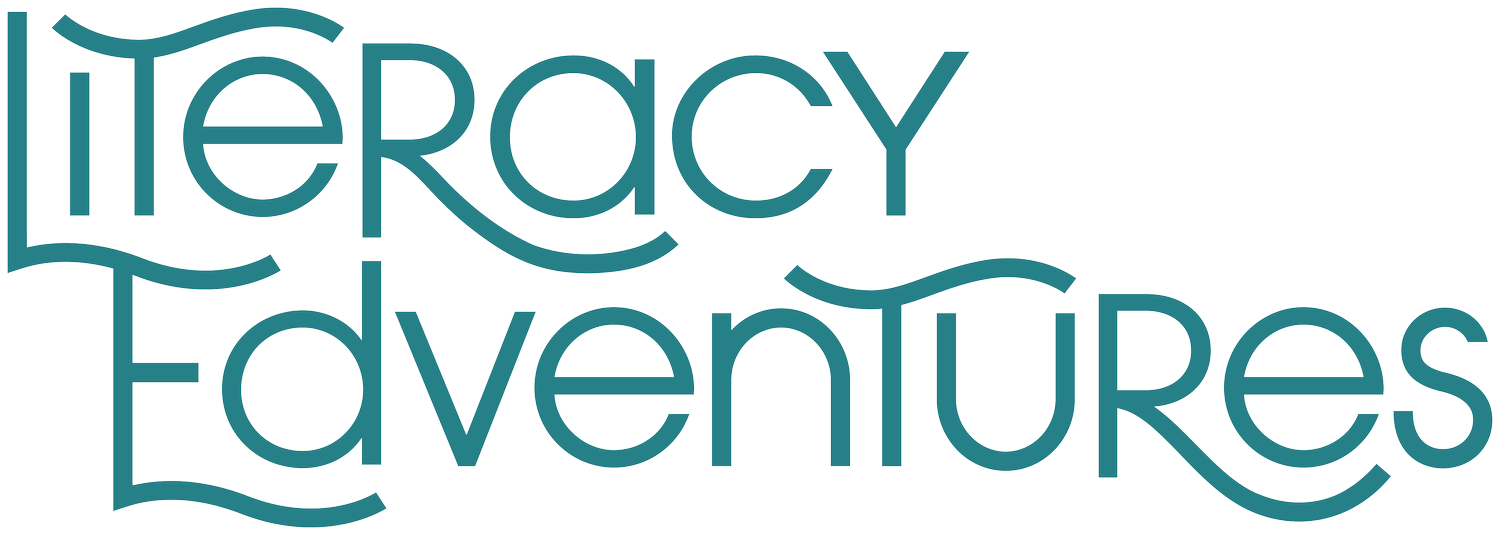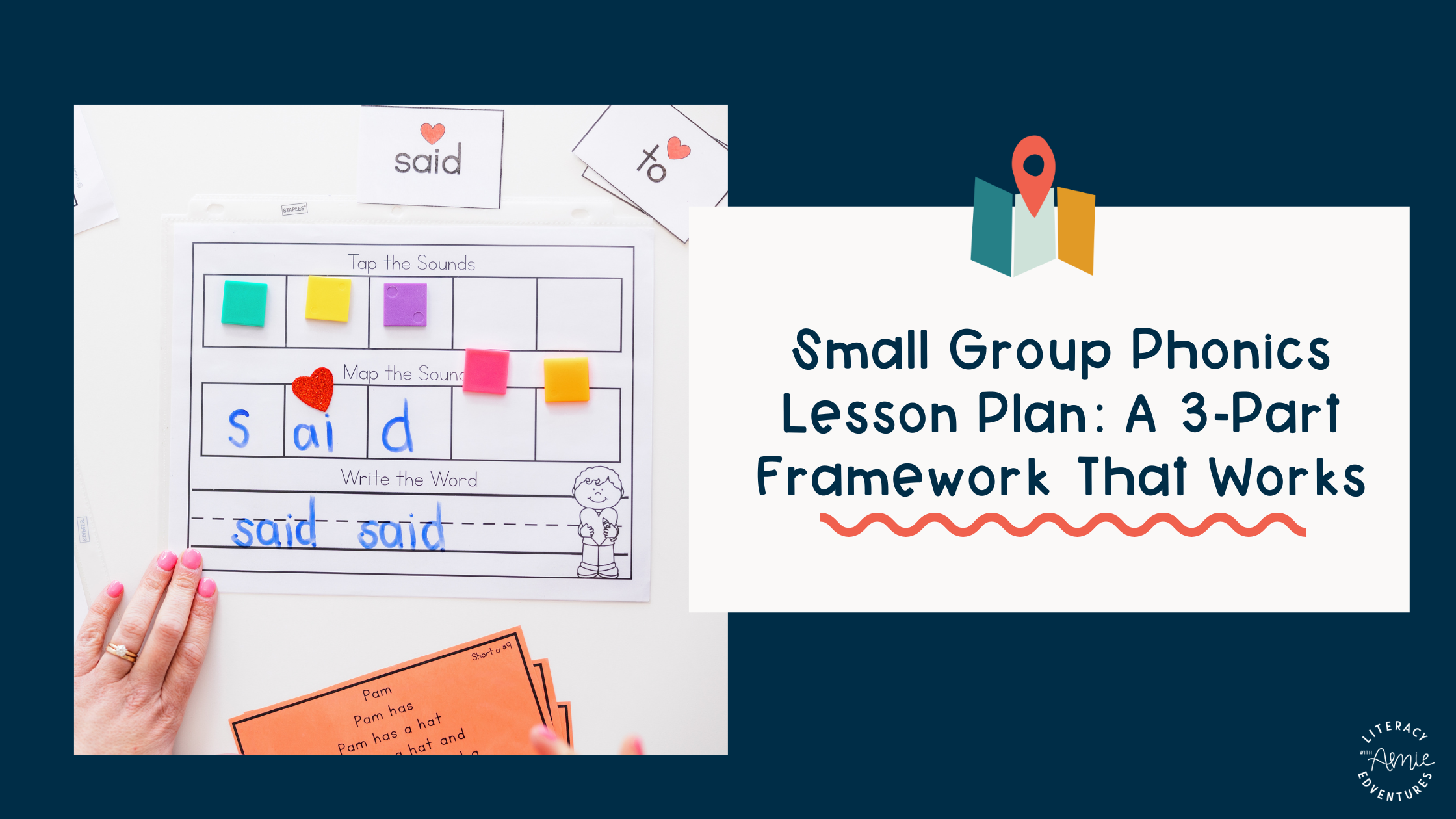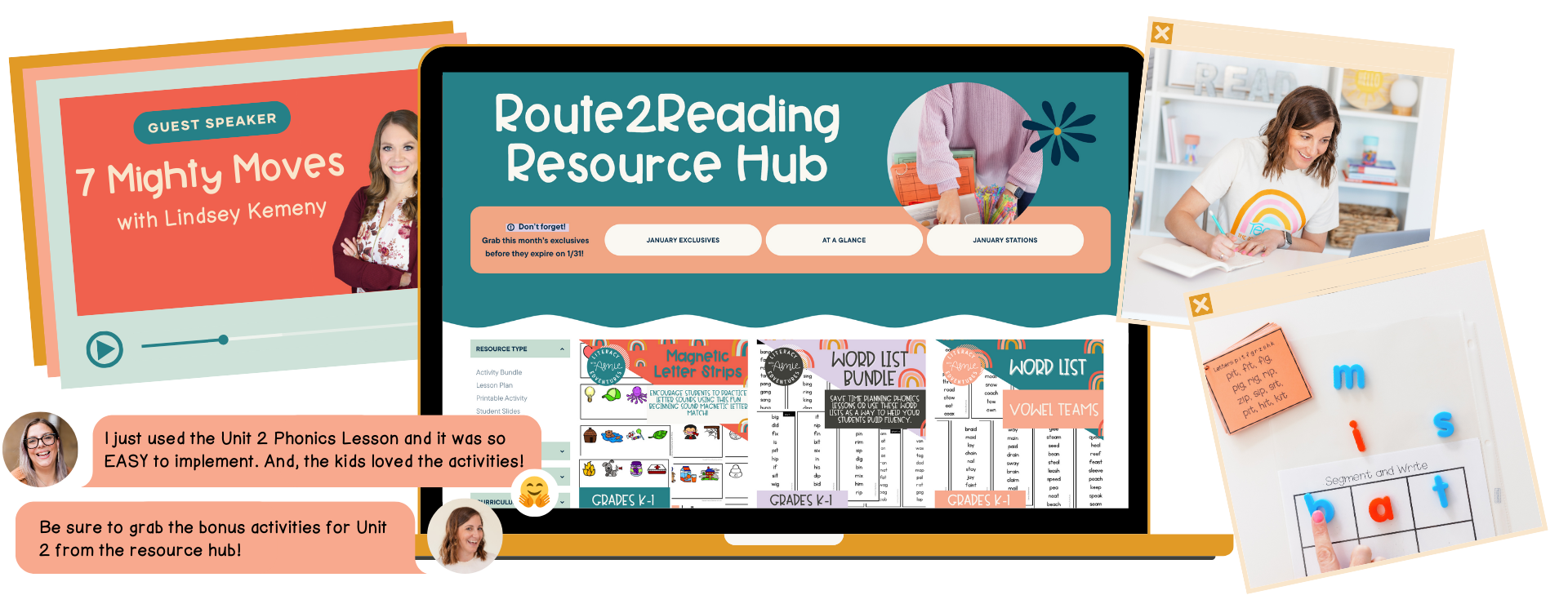Small Group Phonics Lesson Plan: A 3-Part Framework That Works
Small group phonics instruction is where the magic happens—where we catch confusions early, build skills fast, and see lightbulb moments up close. But let’s be real: with limited time and overflowing materials, even the best-intentioned small group can start to feel chaotic.
That’s why I’ve created a simple, research-backed small group phonics lesson plan using a 3-part framework: warm-up, explicit teaching, and application. It’s easy to implement, flexible enough to adapt, and focused on the routines that actually move the needle for early readers.
Whether you're a classroom teacher, reading specialist, or literacy coach, this is a planning system you’ll return to all year long.
Why Small Group Phonics Instruction Matters
When students receive targeted phonics instruction in a small group setting, you can:
Meet learners right where they are
Provide direct, explicit support with plenty of feedback
Boost confidence and engagement
Accelerate reading progress in less time
In fact, small group instruction is one of the most powerful tools we have for preventing reading difficulties before they require intervention. But only when we keep it focused, consistent, and research-aligned.
A Simple 3-Part Framework for Phonics Success
This 3-part lesson plan framework keeps your small group instruction streamlined and high-impact:
1. Warm-Up: Review & Reconnect
Goal: Reactivate prior knowledge and prepare the brain for learning.
Time: 3–5 minutes
What to include:
Visual Drill: Flash graphemes and say the sounds
Auditory Drill: Say a sound, students write the grapheme
Blending Drill: Model smooth blending with known sounds
Phonemic Awareness: Quick isolation, blending, segmenting
Why it matters: Warm-ups boost automaticity, build long-term memory, and get students ready to apply known skills. You’re not teaching something new here—you’re reinforcing.
Tips:
Rotate drills by day (e.g., visual on Monday, auditory on Tuesday)
Align drills to your current skill and review from 4–6 weeks back
Prep once: Laminate or ring together warm-up cards by skill or group
2. Explicit Teaching: Make It Stick
Goal: Teach new skills directly, clearly, and systematically.
Time: 5–10 minutes
What to include:
Direct instruction of the target skill
I Do, We Do, You Do modeling
Word Mapping
Word Chaining
Dictation practice
Why it matters: Reading and spelling are reciprocal. Explicit teaching ensures students are hearing, mapping, and applying each phoneme-grapheme correspondence in a multisensory way.
Tips:
Choose 1–2 routines per day to keep it focused
Make every activity connect decoding AND encoding
Prep materials once: word chains, mapping sheets, dictation helpers
3. Application: Use It in Context
Goal: Help students transfer phonics skills to connected reading and writing.
Time: 5–10 minutes
What to include:
Decodable words, phrases, or sentences
Fluency pyramids or phrase reading
Mix & Fix sentences
Decodable text
Dictation (words/sentences)
Why it matters: Application moves students from isolated skills to real reading. It builds fluency, confidence, and comprehension.
Tips:
Scaffold text (start with words → phrases → sentences → passages)
Reread decodables multiple times (use sand timers or color-coded stars)
Pair dictation with decodables to reinforce encoding
Build Your Small Group Toolkit (Once!)
To make this sustainable, print and prep your tools once:
Phonemic Awareness Warm-Ups (ringed by skill)
Visual + Auditory Drill Cards
Word Chains by phonics skill
Mapping + Dictation Sheets
Decodable texts (print weekly)
Store these by group in bins, folders, or carts. During your planning time, just swap in the skill—not the entire routine. Your system stays consistent, and your students stay focused.
Pro Tip: If you're a coach or interventionist, create starter kits for your teachers. When materials are prepped and routines are modeled, even the most hesitant teachers are more likely to follow through.
Final Thoughts: Keep It Simple, Keep It High-Impact
The most effective small group phonics lessons aren’t complicated—they’re consistent, skill-aligned, and rooted in research.
When you stick to this 3-part framework, you free yourself from overplanning and give your students the structure they need to grow.
You don’t need 15 activities. You need 5 powerful ones that you use well.
And now you’ve got them.
I understand that buying each resource separately can quickly ADD UP. As a teacher, I know we have to make the money we spend COUNT! But don’t worry—there’s a more straightforward, more efficient solution with Route2Reading, my K-2 membership designed to streamline planning, prepping, and teaching small group instruction.
Rather than spending your weekends glued to your computer, searching for Science of Reading-aligned phonemic awareness, phonics lessons, and decodable texts for your small groups, you can log in to Route2Reading.
Choose the focus skill for the week, download the detailed, step-by-step lesson plans and activities, and your small group instruction is ready to go in just a few clicks. Planning has never been easier!
I hope that you found today’s post helpful. Whether you choose to join the membership or not, I am always here to help you in any way that I can. Leave your questions below or send me an email Amie@literacyedventures.com








